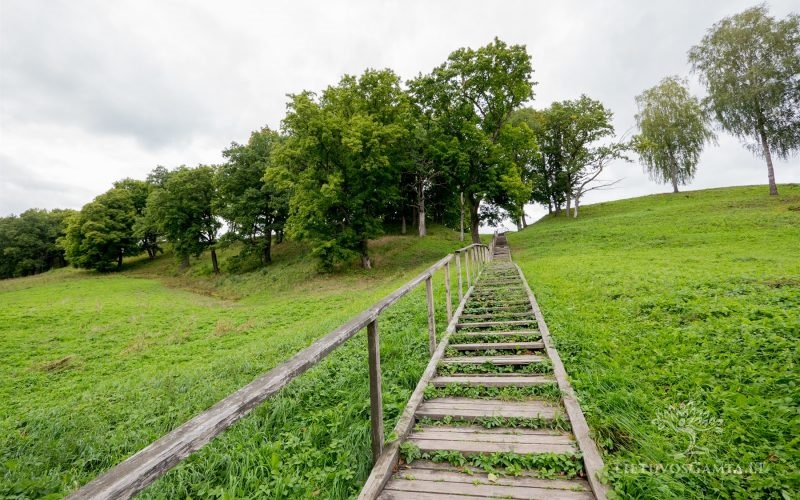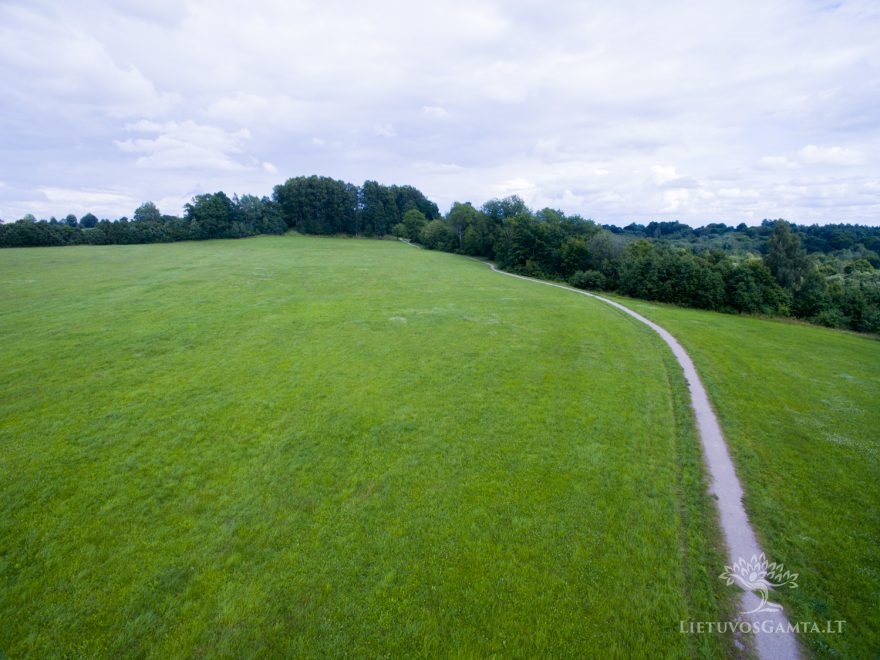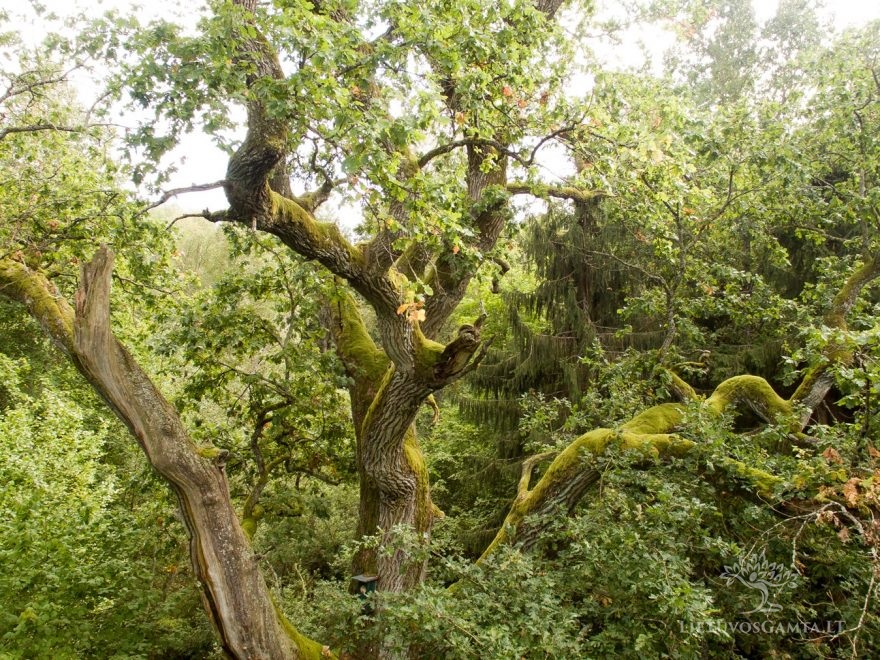Dubingiai Castle Site
Also called Castle Hill
Dubingiai, Moletai district
Dubingiai Castle Site is the largest castle site in Lithuania. The hill, which is also called Castle Hill, is situated in a wonderful peninsula of Lake Asveja. And not an ordinary castle formerly stood here, but the luxurious palace stemmed to the sky and served as an accommodation of the greatest historical figures of our country.
A wooden castle stood in the island in the 14th century and guarded the road that led to Vilnius against the attacks of the Livonian Order. It is believed that precisely this old castle and a mound that was used in prehistoric times gave start to the development of Dubingiai Castle Site.
Vytautas, the Grand Duke of Lithuania, had settled in the island of the lake after the Battle of Grunwald: he built a new two-storey castle with cellars, and after a while – a wooden Roman Catholic church. Jogaila, the cousin of Vytautas, had visited the castle with his officials after he was invited by the Grand Duke. After the death of Vytautas, the castle site was in the possession of the governors of Casimir IV Jagiellon, the Grand Duke of Lithuania. But as far back as from the beginning of the 16th century Dubingiai estate went into the possession of the Radziwiłł family. The respectable noblemen built a new castle of masonry in the island of the lake. The walls of the castle saw the whole great history of the rise and prosperity of the family. Both Mikołaj “the Red” Radziwiłł and Mikołaj “the Black” Radziwiłł resided in the palace. And many other representatives of the great family. But only the visit of Barbara Radziwiłł, who stayed in the castle for five months, is remembered with sorrow. Barbara Radziwiłł felt in Dubingiai as if she was exiled: the young woman, who was usually a happy and passionate person, had withdrawn into her own world and became a very devout woman. She exchanged her luxurious cloths for nun‘s habit, and often prayed in the church that was reconstructed at the initiative of Mikołaj “the Red” Radziwiłł and transferred to Evangelical Reformats community.
The palace of the Radziwiłł family in Dubingiai was a luxurious place: it was a two-storey palace of masonry with a tower and cellars. Glazed tiles, mostly bearing the Coat of Arms of the Radziwiłł family and few with an image of a Madonna, were found in the castle site. But the palace was poorly maintained and cared for. It is said that the floor of the palace caved in under the feet of Barbara Radziwiłł.
It appeared that even three churches stood in Dubingiai Castle Site, and the remains of the great Radziwiłł Family were found in 2004 in the remains of one of the churches. It is said that the church suffered severe damage during the war and the remains of the Radziwiłł Family were desecrated. The contemporary sub-elder, who knew that the noble family was buried in the church, collected the bones of the deceased noblemen, put them into the box and placed it under the former “table of God”.
The palace of the Radziwiłł Family had become abandoned and desolate in the middle of the 18th century, and in 1808 Dubingiai went into the possession of Michał Tyszkiewicz. The summerhouse of the President Antanas Smetona that was used as accommodation for foreigners stood here during the interwar period. It was later burned down by soldiers.
Today you can not only admire picturesque panorama of the surroundings from the top of the mound that can be reached by steep stairs, but can also take a walk around the whole peninsula on the cognitive walkway. But do not forget to see on your way the unearthed remains of the buildings that are reminiscent of such a great history of Lithuania…


























































